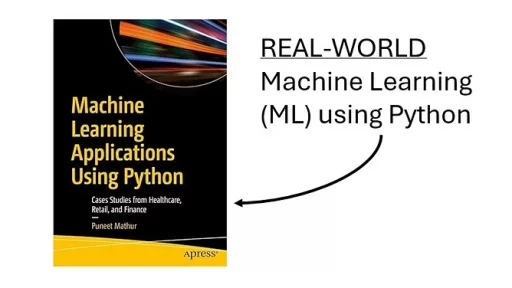Python speaks the language of logic. It follows instructions, obeys rules, and works with focus on outcomes. Randomness, in python’s world, is an illusion. The numbers it calls random are carefully crafted, computed, and predictable if someone knows the formula behind them.
In nature, randomness is different. Raindrops hitting pavement, atoms moving in a chaotic swarm, the roll of ocean waves — these are not products of calculation. They emerge from complex interactions, some of which are impossible to predict.
Electrons take this unpredictability even further. Unlike macroscopic objects that follow classical physics, electrons behave in ways that defy intuition. Their position and momentum cannot be precisely known at the same time, a principle known as Heisenberg’s uncertainty principle. When observed, they do not move in neat, predictable paths but exist as probability clouds, shifting between energy states in ways that appear purely random.
The question haunts programmers. Can a computer ever harness true randomness? And if someone succeeds, how much wealth awaits the programmer or team?
Python’s Perspective on Randomness
Python, like most programming languages, provides a random module that allows users to generate numbers that appear random. But these numbers come from a process known as pseudorandom number generation (PRNG).
PRNGs rely on an initial seed value. This seed starts a sequence that appears random but is fully determined by mathematical operations. If someone knows the seed, they can predict every “random” number that follows.
For practical purposes, PRNGs work well. Games, simulations, and cryptographic applications depend on them. Python’s Mersenne Twister, the default PRNG, generates numbers with an extremely long cycle, making it difficult to detect patterns without deep analysis.
But “difficult” is not the same as impossible. A PRNG remains a structured system — it does not mimic the unpredictable chaos of nature.
Why True Randomness Matters
In computing, some applications demand true randomness. Cryptography is the most obvious example. If a hacker can predict the numbers used to generate encryption keys, they can break security measures. A world dependent on digital transactions would crumble if randomness were compromised.
Scientific research also requires unpredictability. Weather models, quantum mechanics, and complex simulations all depend on randomness that cannot be reverse-engineered.
Another example is radioactive decay. When an unstable atomic nucleus breaks down, it emits radiation at completely unpredictable intervals. No equation determines the exact moment when a single atom will decay. Scientists can calculate the half-life, the statistical average at which half of a sample will decay, but predicting the precise decay time of an individual atom is impossible.
Financial markets, too, crave true randomness. Traders build models that predict stock behavior, but if the market contained truly unpredictable movements, it would disrupt algorithmic trading strategies. A computer that could harness real randomness might find ways to outmaneuver market trends.
How Close Are We?
Some computers already use randomness that does not rely on deterministic algorithms. Quantum computers, for example, generate random numbers by observing quantum states — particles behaving in a way that appears truly unpredictable.
Some modern processors include hardware random number generators (HRNGs), which take readings from unpredictable sources like electrical noise. Python can access these through the secrets module (see below), which taps into system-level randomness rather than relying on the PRNG from the random module.
But these are not perfect. Noise-based generators can still be biased. Quantum randomness remains difficult to scale. The quest for pure, scalable, and efficient randomness continues.
The Fortune That Awaits
If someone creates a system that produces true randomness efficiently, they hold a key to enormous wealth. Governments, banks, and tech giants would compete to acquire such technology. Cryptocurrency security would become unbreakable. Simulations would reach a new level of realism. Machine learning models could explore entirely new possibilities.
Consider the impact on gambling. Casinos operate on probabilities. They build odds based on expected randomness. If someone introduced a truly unpredictable number generator, it might disrupt traditional methods of risk assessment, shaking the foundation of betting industries.
Stock markets, too, rely on statistical modeling. A system that could inject genuine randomness into predictions would change trading strategies overnight.
Python’s Role in the Future of Randomness
Python remains a tool, not a thinker. It does not chase randomness — it mimics it. But as quantum computing advances and hardware evolves, Python will likely integrate new ways to access unpredictable phenomena.
The secrets module already takes a step toward genuine randomness by pulling entropy from system-level sources rather than relying on predictable pseudorandom number generators. Instead of using the Mersenne Twister algorithm like the random module, secrets taps into the operating system’s entropy pool, which gathers randomness from physical processes such as CPU timing, electrical noise, and user input fluctuations. This makes it far more suited for cryptographic security, generating truly unpredictable tokens, encryption keys, and authentication credentials.
Beyond secrets, Python is expanding its reach into quantum randomness. Libraries such as Qiskit allow programmers to interact with quantum computers, leveraging fundamental quantum mechanics to generate entropy beyond classical computation. As quantum technology becomes more accessible, Python may integrate quantum-based entropy sources directly into its standard library, providing a level of randomness that cannot be simulated by traditional algorithms.
For now, Python remains tethered to system randomness and pseudorandom number generators. But if a programmer finds a way to harness true randomness efficiently — whether through quantum mechanics, nuclear decay, or another natural process — they won’t just change Python. They will change the world.
How secrets Works
The secrets module taps into the operating system’s built-in entropy pool, which gathers randomness from unpredictable sources such as:
- Keyboard and mouse movements (on some systems)
- Disk and network activity
- Interrupt timing fluctuations in CPU operations
- Thermal noise from electronic components
These sources contribute to a randomness pool that can be accessed via system functions. On most modern operating systems:
- Linux/macOS uses
/dev/urandomor/dev/randomfor system entropy. - Windows uses
CryptGenRandom()orRtlGenRandom()from the Windows Cryptography API.
Since these system calls leverage hardware and environmental factors, they are not based on a predictable mathematical function like PRNGs.
Key Functions in secrets
The secrets module provides several functions that generate truly unpredictable numbers for cryptographic purposes.
1. Generating Secure Random Numbers
import secrets
random_number = secrets.randbelow(100) # Random integer between 0 and 99
print(random_number)This function ensures that the result is not drawn from a predictable sequence, unlike random.randint().
2. Secure Token Generation
token = secrets.token_hex(16) # 32-character hexadecimal token
print(token)Useful for generating session tokens, API keys, and cryptographic salts.
3. Secure Random Choice from a List
choices = ['apple', 'banana', 'cherry']
secure_choice = secrets.choice(choices)
print(secure_choice)Unlike random.choice(), this ensures that the selection is not biased by a predictable PRNG sequence.
Why secrets is Different from random
| Feature | random Module | secrets Module |
|---------------|--------------------------------|---------------------------------------|
| Type | Pseudorandom | System-generated entropy
| Algorithm | Mersenne Twister | OS-based (e.g., /dev/urandom)
| Predictability | Predictable if seed is known | Unpredictable
| Use Cases | Simulations, games, statistics | Cryptography, authentication, security-sensitive tasksThank you for reading this article. I hope you found it helpful and informative. If you have any questions, or if you would like to suggest new Python code examples or topics for future tutorials, please feel free to reach out. Your feedback and suggestions are always welcome!
Happy coding!
Py-Core.com Python Programming
You can also find this article at Medium.com


